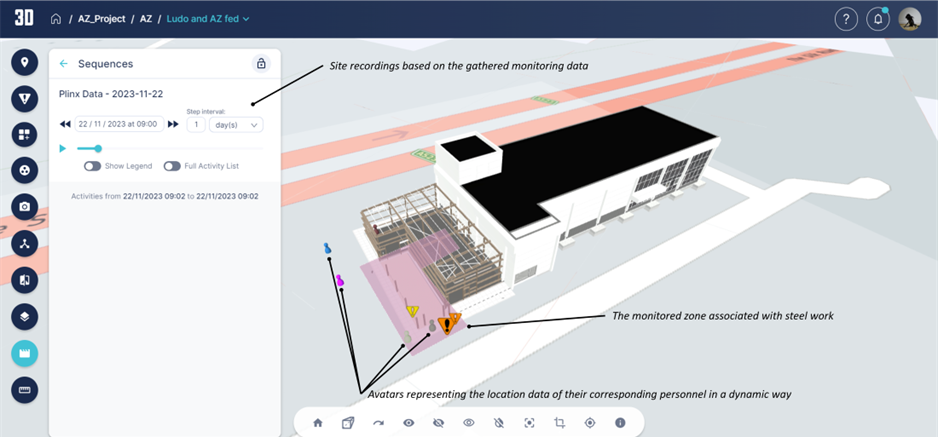
The Health & Safety Executive’s live trial pioneering the use of sensors and safety zones with 3D modelling won the Digital Innovation in Health, Safety and Wellbeing category, sponsored by Mission Room, at the Digital Construction Awards last night (2 July).
For the past two years, the Health & Safety Executive (HSE) has been working through the Discovering Safety programme with the construction industry, academia and technology providers to develop a library of standardised data and processes that can be incorporated into visualisation and modelling tools, including BIM, to mitigate safety risks in construction.
As an extension of this project, a new trial was started to pioneer the use of sensors that can be physically attached to people and plant equipment, and digitally linked to a BIM model to create safety zones.
The trial’s key outputs were to:
- showcase the viability of design of 4D safety zones, planned in advance of work starting, on a construction site during construction;
- demonstrate how the data collected by onsite sensors can be visualised and analysed in a BIM model via a playback scenario. Doing so can offer valuable insights to guide future decisions for site planners;
- provide a basis for enhancing safety standards and generating guidance and best practice for the construction sector, particularly by enhancing analysis of the hierarchy of controls;
- contribute to the body of knowledge within HSE about the effectiveness of digital tools in the construction sector; and
- contribute to enhancing health, safety, and productivity in construction practices by reducing delays and project costs resulting from onsite accidents.
Integration of digital technologies
The six-month trial, which was completed in January 2024, leverages digital monitoring and control through the integration of two digital technologies – the modelling technology within SafetiBase from Asite 3D Repo and the wearable sensors supplied by Plinx.

The SafetiBase cloud-based system was used to identify and capture hazards within the BIM model following the BS 1192-6 standard. It was also used to highlight the safety zone that will be monitored and present their geometrical and temporal data.
The sensing-based system from Plinx was then used for monitoring the identified zones in the physical construction site by tracking onsite personnel or equipment and alerting the site operative of any unauthorised trespassing.
An effective integration workflow was required to ensure a seamless API-based data exchange between them. This data exchange enabled the activation of alerts through helmet-mounted sensors, providing onsite staff with real-time notifications in the face of potential hazards or unauthorised activities.
“The use of technology to improve safety, particularly around separation, is key. Great to see the industry, academia and tech suppliers pulling together.”
Such a bespoke API connection (developed by Plinx) allowed zone data, including its XYZ coordinates, project reference point, and the start and end time of associated activities, to be collected by the Plinx broker via Asite 3D Repo’s API.
The broker then converts the XYZ coordinates to WGS8 (Lat/Lon) so it can be used within the Plinx system. Plinx activates the zone at the start time and deactivates it at the end time. Meta information from the risk treatment ticket, such as zone type, purpose and supplementary information in the treatment notes, is made available within Plinx, reducing the need for an interface with a secondary platform for configuration.
Gordon Crick, health and safety inspector at the HSE, said: “This project is special because we have got a tremendous team. What we did was a world first – we were able to demonstrate that you can create an exclusion zone on a 3D model, then virtually reproduce it on site using geofencing technology, and then track it in the BIM model. We can watch people in real time if they encroach an exclusion zone.
“It’s very early days, but we proved the point that live monitoring technology is possible. That’s a significant advancement for health and safety.”
- Geospatial Commission/AtkinsRéalis | The National Underground Asset Register
- Fit For Work
- Graham | CORA: Enhancing health, safety and environmental reporting and analytics
- HSE | Industrial Safetytech Regulatory Sandbox
- HSE | Sensors and safety zones with 3D modelling
- Proicere | Sellafield Product and Residue Store Retreatment Plant
Don’t miss out on BIM and digital construction news: sign up to receive the BIMplus newsletter.












